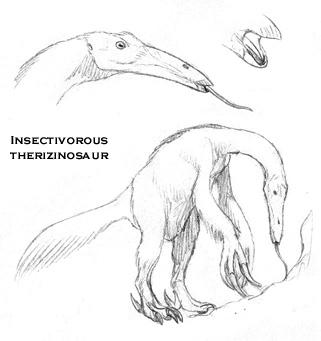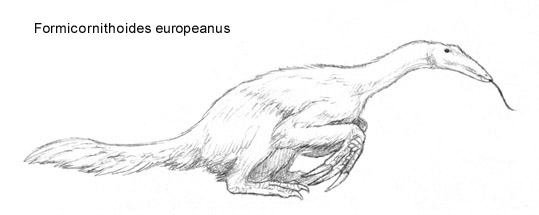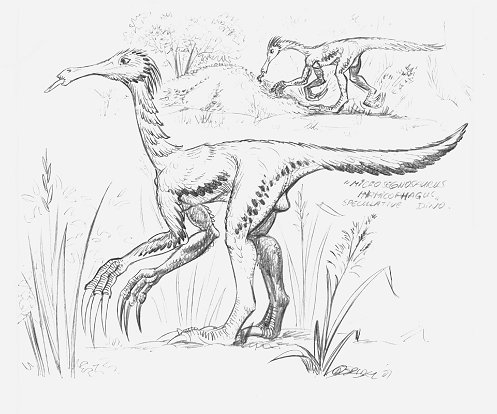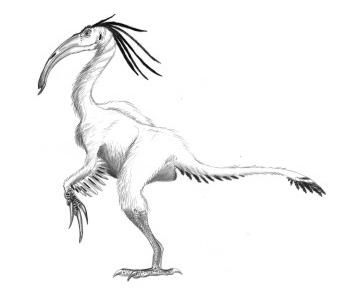
Microsegnosauridae, a group of small, insectivorous
maniraptors was one of the stranger radiations of Therizinosauria.
Evolving in the Oligocene, migrosegnosaurids became quite common during
the Miocene and Pliocene, when they spread across Eurasia. Several
well-preserved skeletons show small, lightly-built creatures with long,
tubular snouts and powerful forelimbs. The retroverted pubis of the
therizinosaurs was, with the microsegnosaurs, greatly reduced and pulled
forward, like that of a basal coelurosaur, while the legs were reletively
long and slender. The obvious explanation for these adapatations
is that these dinosaurs were ant-eaters, although exactly why ants were
so tempting as a food source that the therizinosaurs could completely abandon
their former lifestyle and favor of their consumption is unknown.

The early Oligocene microsegnosaurid Formicornithoides
europeanus is the first known species of myrmicophagous therizinosaurs.
When the fragmentary skull and limb material the species is known from
was first discovered, it couldn't be indisputably identified as a therizinosaurid.
It wasn't before the discovery of Microsegnosaurus
that the animal could be properly classified.

(Picture by Luc J. "
Aspidel"
Bailly)
 Back to Spec
Back to Spec

